Fed raises interest rates by quarter point and opens door to pausing increases
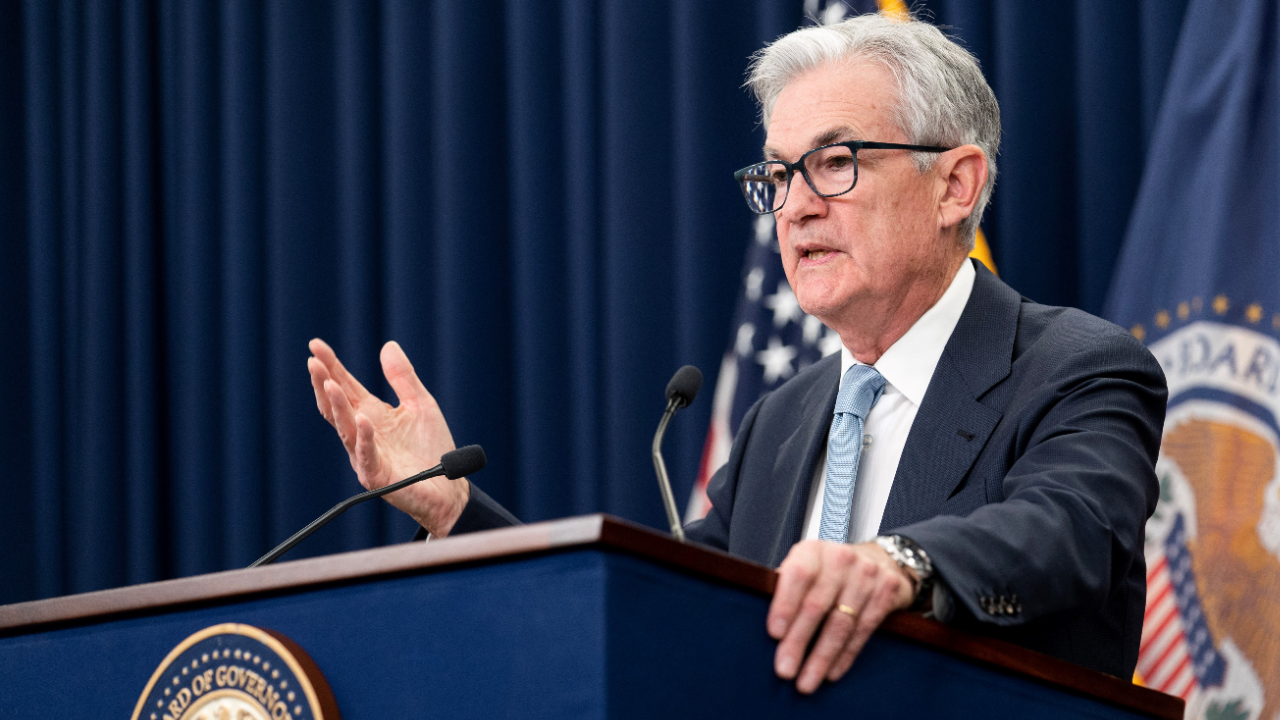
The Bankrate promise
At Bankrate we strive to help you make smarter financial decisions. While we adhere to strict , this post may contain references to products from our partners. Here's an explanation for .
The Federal Reserve hiked interest rates to the highest level in nearly 16 years but suggested it might not lift borrowing costs much more, meaning the Fed may soon be hitting pause on its most aggressive efforts to slow the economy in four decades.
Officials on the Fed’s rate-setting Federal Open Market Committee (FOMC) set the new target range for their key benchmark interest rate at 5-5.25 percent, a level it hasn’t reached since the fall of 2007.
The Fed moved forward with the 10th consecutive rate hike even amid news of a third major bank failure, now the second biggest in U.S. history. The Federal Deposit Insurance Corp. (FDIC) announced Monday that it had sold most of the troubled First Republic Bank to JPMorgan Chase, almost two months after California-based Silicon Valley Bank (SVB) and New York-based Signature Bank collapsed in early March.
Policymakers have been looking past the regional banking stress because they’ve been laser-focused on wrestling inflation. Prices have now remained above the Fed’s 2 percent inflation target for more than two years. Even as prices improve on household staples such as food and energy, inflation is still harming Americans’ ability to afford everyday essentials, with rents, household furnishings and services still rising.
Experts say the Fed’s latest rate hike — and potentially last, at least for now — acts as a form of risk management. Rather than raise interest rates as high as they had hinted they were going to before SVB collapsed, officials are signaling that they’re ready to wait and see just how much the economy is slowing before approving any additional moves. Banking turmoil is expected to only exacerbate the tightening of credit conditions that began when the Fed first started lifting interest rates.
“The committee will closely monitor incoming information and assess the implications for monetary policy,” Fed officials said in its post-meeting statement, removing language about policymakers expecting “additional policy firming.”
The economy is also at a crossroads. Consumer spending has been slowing, manufacturing activity has declined and the powerhouse of a job market is showing signs of losing steam. The recent direction of the U.S. economy suggests higher rates are doing what they’re designed to do — but it won’t be without pain for consumers.
“Will this be the last rate hike? In true central bank fashion, the Fed left themselves a path to pause, or to hike rates further, if necessary,” says Greg McBride, CFA, Bankrate chief financial analyst. “In pushing the benchmark Fed funds rate above 5 percent for the first time since 2007, the Federal Reserve is underscoring their commitment to getting inflation under control and restoring price stability.”
The Fed’s rate decision: What it means for you
Savers
Americans who keep cash stashed in a savings account could soon see even bigger payouts — but a Fed on pause means those interest rates may be near their peak.
The Fed’s rapid rate hikes have brought savings yields to the highest in more than a decade. Banks have been lifting yields in lockstep with the U.S. central bank. The average annual percentage yield (APY) on a savings yield has risen from 0.06 percent in May 2022 to 0.24 percent as of April 26, according to national Bankrate data.
Savers may be leaving even more money on the table if they don’t keep their cash deposited in an online, high-yield account. The 14 banks ranked for Bankrate’s best high-yield savings accounts back in July 2021 were offering an average APY of 0.51 percent, with a high of 0.55 percent and a low of 0.40 percent. As of May 3, the 10 banks ranked are offering an average yield of 4.6 percent.
A Fed on pause doesn’t mean the good news for savers is completely over. Another major boon for savers will occur when inflation starts to slow to a level even lower than the interest rate on their cash.
Inflation may soon breach that point. Consumer prices in March rose 5 percent from a year ago, down from a high of 9.1 percent in June 2022, according to data from the Department of Labor.
A liquid, accessible and FDIC-insured savings account can be a great home for your emergency fund, an important area of focus for your finances at a time when the economic outlook looks uncertain. A Bankrate survey of economists put the odds of a recession in 2023 at 64 percent — suggesting it’s more likely than not.
Yet, yields on savings accounts can fluctuate. Now that most of the Fed’s rate hikes may be in the rearview mirror, Americans who want to secure these elevated savings rates for longer might want to consider locking in a certificate of deposit (CD). A CD — especially with a longer-term maturity lasting anywhere between two to five years — could be a strong addition to your financial portfolio if you already have enough cash on the sidelines to cover any unexpected expenses.
Borrowers
Higher Fed rates equal more expensive borrowing costs for almost every type of loan, from car loans and credit cards to variable-rate mortgages and personal loans.
“The highest borrowing rates in years will get a little bit higher for credit cards, home equity lines of credit, auto loans, and personal loans,” McBride says.
The national average credit card annual percentage rate (APR) notched a new record high of 20.23 percent on April 26, up from 16.34 percent before the Fed started hiking rates, according to Bankrate data. Meanwhile, home equity loan rates hit the highest since 2009, while used car loans rates are the highest in 12 years, Bankrate data also shows. The average rate on a four-year new car loan, meanwhile, is up 2.68 percentage points since January 2022.
If you’ve been holding on to high-cost or variable-rate debt, the rising-rate environment has no doubt hit your finances hard. That situation won’t change, even if the Fed stops raising rates. Borrowing costs might not rise further, but they are likely to stay high — until the Fed starts reducing interest rates.
Fed officials have indicated the bar for cuts is high as inflation remains stubborn. Projections show policymakers don’t currently expect to start making borrowing costs cheaper until 2024. Even then, those rate cuts might not be as large as the ones Fed officials approved during the coronavirus pandemic.
Borrowing costs could remain high for some time, meaning paying off high-rate debt should remain a priority. Consider utilizing a balance transfer card with a 0 percent APY introductory offer if you’re trying to chip away at your high-cost credit card debt.
Homebuyers
The housing market has left many prospective homebuyers reeling — and that was even before the Fed began raising interest rates. The median sale price of a U.S. home rose almost 49 percent between the second quarter of 2020 and the fourth quarter of 2022, hitting $479,500, Census Bureau data shows.
Home prices are cooling, and existing home sales fell in March, according to the National Association of Realtors. Yet, affordability issues remain the top barrier to homeownership, a Bankrate survey published in April shows.
Home prices are sensitive to mortgage rates, yet ongoing supply issues are keeping them elevated — even as mortgage rates remain high. The average rate on a 30-year fixed mortgage has fallen from its peak of 7.12 percent APR in October, hitting 6.48 percent as of April 26, according to Bankrate data.
Still, a $340,000 30-year mortgage would’ve cost $1,507 in principal and interest back in January 2022, before the Fed started raising rates, according to Bankrate’s mortgage calculator. Today, that monthly payment would be $2,144 — a 42 percent jump.
Unless the U.S. economy materially slows, mortgage rates are unlikely to reach pandemic-era lows. It all suggests homebuyers are going to have to contend with a new era for the housing market: Higher rates and more expensive housing costs. Be sure to keep an eye on rates and shop around, comparing multiple offers from lenders.
“A slowing economy and an easing of inflation pressures are the prerequisites for lower mortgage rates,” McBride says.
Investors
Investors may think a Fed pause is good news — but the U.S. economy could still be catching up to the 500 basis points worth of tightening since March 2022.
The ultimate fear: What else could higher rates break? Silicon Valley Bank, Signature Bank and First Republic are no doubt casualties of the Fed’s tightening era, though poor asset management is also to blame for the three major bank failures. Yet, banks are still facing distress, even after JPMorgan absorbed First Republic’s deposits. Regional bank stocks are down 30 percent over the past six months, according to the KBW Nasdaq Regional Banking Index. PacWest shares are down 72 percent from six months ago, while Western Alliance has also plunged 53 percent during the same period.
Market volatility could exacerbate the tightening in financial conditions that’s been occurring as the Fed raises rates and other banks slow how lending to stay afloat.
Other concerns on investors’ minds are whether the financial system could enter the long-foreseen recession this year. The job market is noticeably cooling, with job openings declining and new applications for unemployment insurance trending upward. The layoff rate in March also edged up to 1.2 percent, while the share of workers quitting their positions slumped to 2.5 percent, according to data from the Department of Labor.
A recession on the horizon could make for a bumpy ride in the stock market, though be sure to keep a long-term mindset. U.S. central bankers are hoping to get control of inflation, which could pose greater threats to companies’ profitabilities than a modest downturn in the long run. Downdrafts in the market can also be an important buying opportunity, while a diversified portfolio can help you weather any storm in the stock market.
Fed faces an uncertain outlook as it debates rate pause
Offering his assessment of the outlook, Fed Chair Jerome Powell indicated he still expects the U.S. economy will avoid the “mild” recession Fed staffers have been forecasting since March. He also cautioned lawmakers on the consequences of failing to raise the debt ceiling, after Treasury Secretary Janet Yellen announced in a Monday letter to Congress that the deadline to avoid default could come as early as June 1.
“No one should assume that the Fed can protect the economy from the potential short- and long-term effects from the failure to pay our bills on time,” Powell said.
Powell also stopped short of saying the Fed is officially on pause. Rather, he kept the Fed’s options open, acknowledging that officials will make a decision based on incoming data between now and the next meeting in June.
“We feel like we’re getting closer and maybe even there,” Powell said, referring to the level that’s considered “sufficiently restrictive” to get inflation down to 2 percent.
The Fed may be taking the middle ground with messaging because it wants to make sure financial markets don’t get ahead of themselves. U.S. central bankers also know they’d have to raise rates again if inflation reaccelerated.
“This could further embolden bond market participants to price in rate cuts for later this year, which is contrary to the messaging the Fed has been delivering,” says Kathy Bostjancic, chief economist at Nationwide. “The Fed chose this option given the large degree of uncertainty surrounding the growth and inflation outlook.”
In the hours after the announcement, investors reshuffled their rate expectations, with some now seeing rate cuts as soon as July or September, according to projections from CME Group’s FedWatch tool. That’s even despite Powell pushing back on the possibility again at the May press conference.
Still, omitting the need for extra rate hikes from the Fed’s statement is a meaningful shift. For the first time since raising rates to curb inflation, Fed officials don’t have a bias to lift rates further. Instead, they’re going to be looking for reasons to move at all.
“We’ve moved a long way fairly quickly,” Powell said. “We can afford to look at the data and make a careful assessment.”
Related Articles
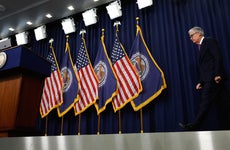
Take these 12 steps as the Federal Reserve keeps interest rates high
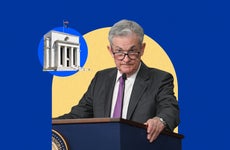
Will stubborn inflation force the Fed to raise interest rates again?
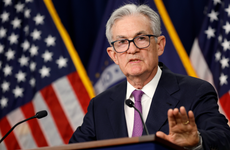
Fed keeps interest rates at 22-year high as economy stays surprisingly strong
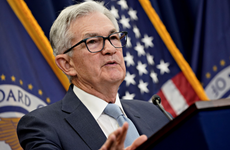
Fed raises rates by quarter point, signals more increases on way to further bring down inflation